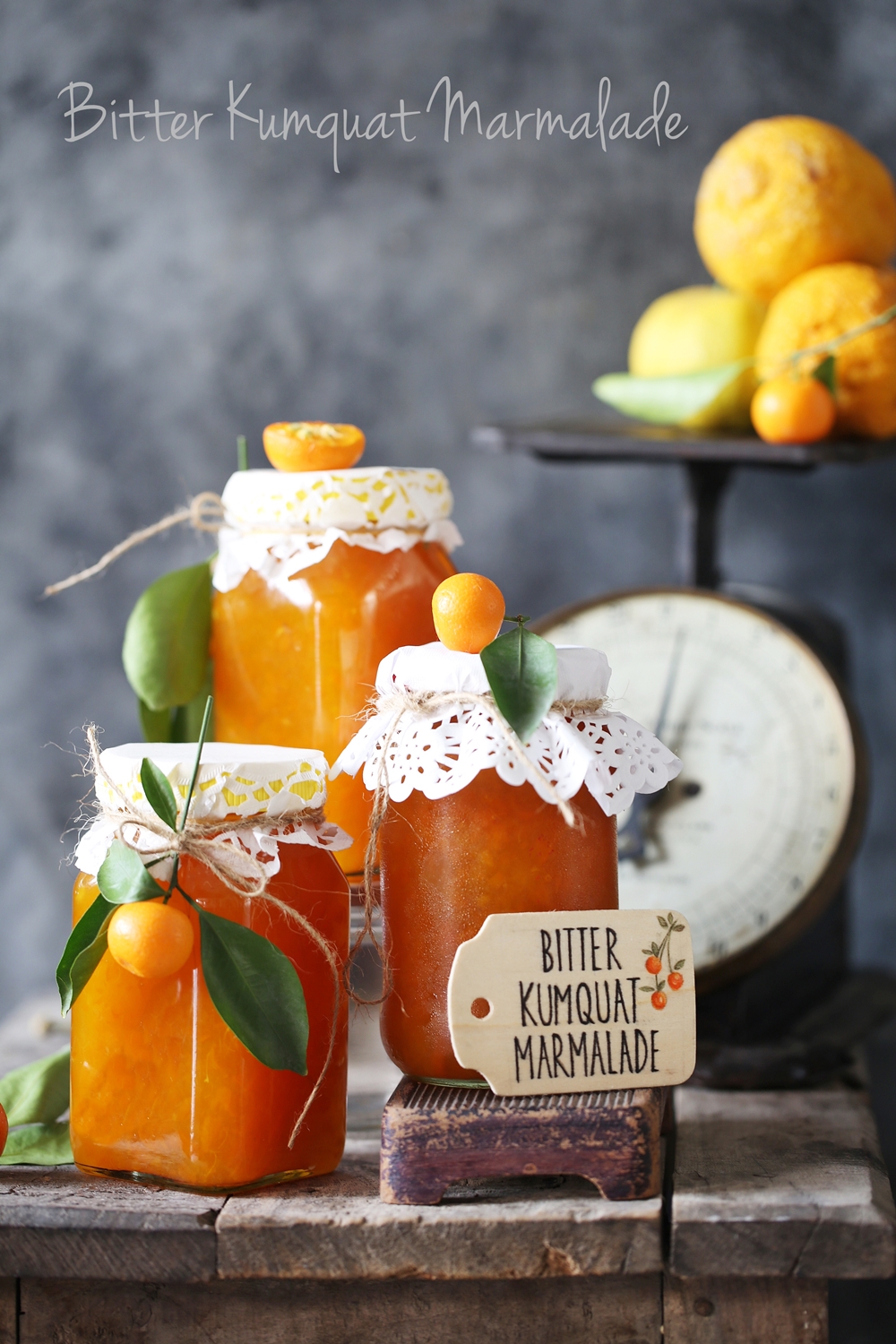
Bitter kumquat marmalade …when life gives you limes, lemons, calamondins & more!
 Bitter Kumquat Marmalade … when so little gives you so much! This is a marmalade I’ve been making for years each time the shrub in the yard gives me this citrusy fruit. We grew up playing with these beauties that caught the glad eye with their bright oranges. Referred to as Chinese oranges, tangerines or narangis, they had little use other than just being an ornamental fruit.
Bitter Kumquat Marmalade … when so little gives you so much! This is a marmalade I’ve been making for years each time the shrub in the yard gives me this citrusy fruit. We grew up playing with these beauties that caught the glad eye with their bright oranges. Referred to as Chinese oranges, tangerines or narangis, they had little use other than just being an ornamental fruit.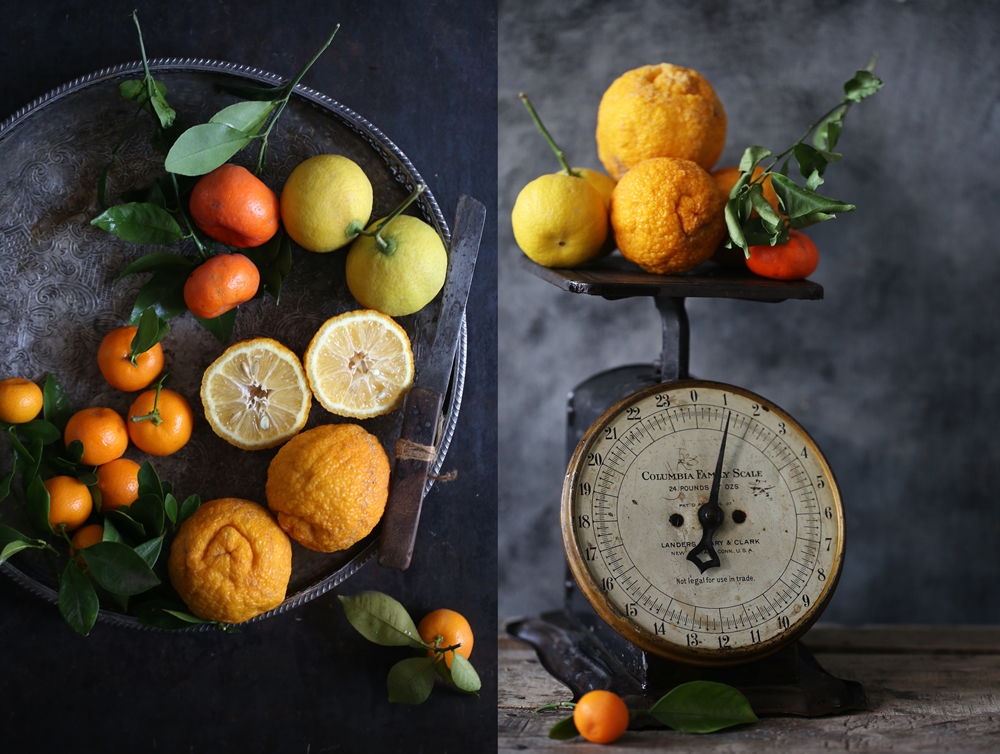
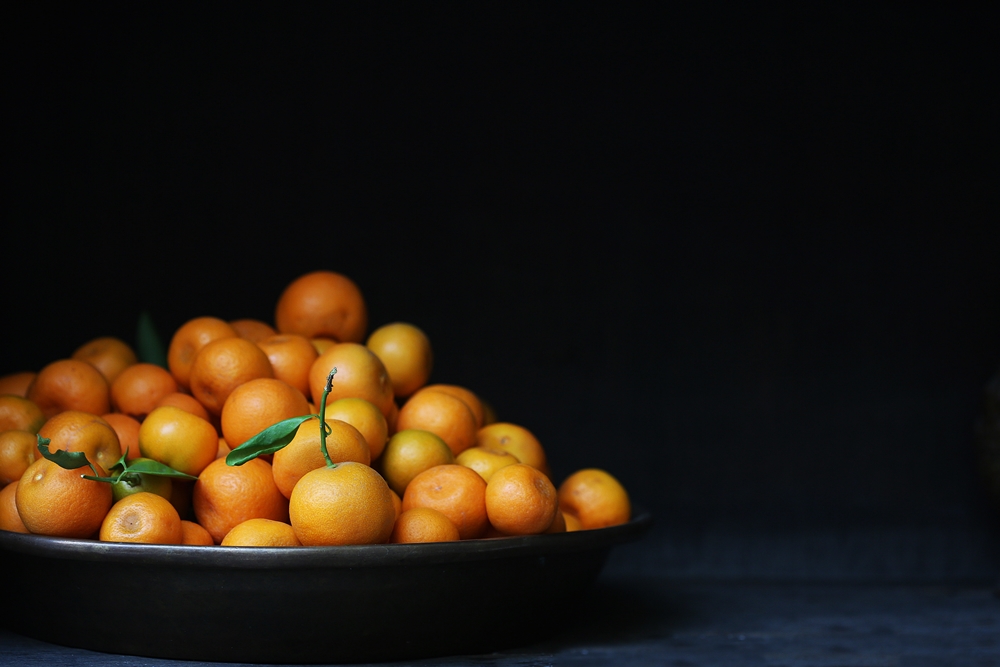 We live and learn from others, and that’s just what I love about community. This recipe came to us several years ago from my mother’s neighbour who once sent across a jar of homemade marmalade. Of course we descended on the poor unsuspecting lady, quite fascinated that something as good could be made at home. The rest as they say is history! Jars of marmalade are constantly stirred in season, at least twice or thrice a year, then distributed among friends and family.
We live and learn from others, and that’s just what I love about community. This recipe came to us several years ago from my mother’s neighbour who once sent across a jar of homemade marmalade. Of course we descended on the poor unsuspecting lady, quite fascinated that something as good could be made at home. The rest as they say is history! Jars of marmalade are constantly stirred in season, at least twice or thrice a year, then distributed among friends and family.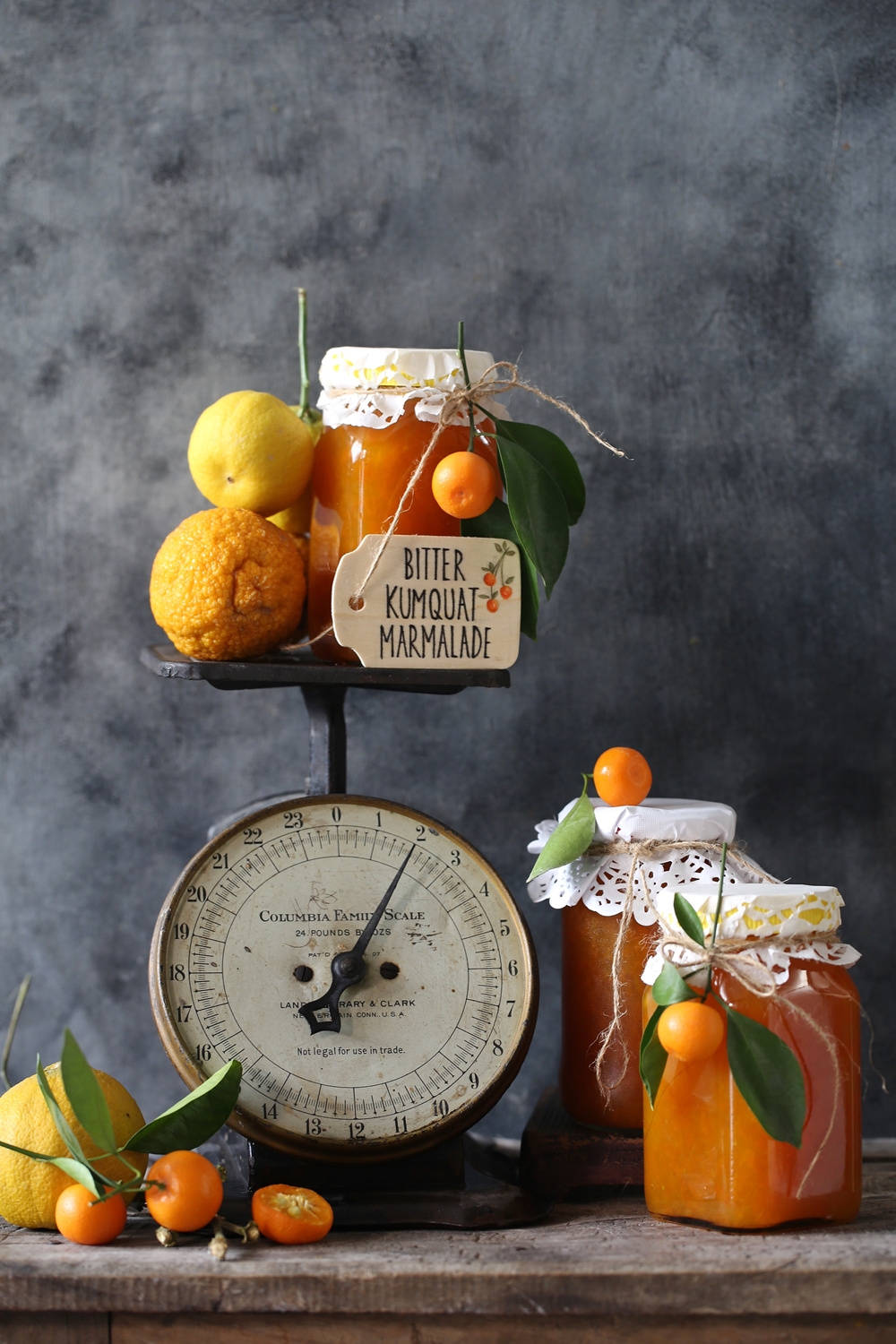 Jam making is very therapeutic and rewarding. This one much more. Seldom does so little yield so much. In this case, these are just homegrown non-commercial fruit from a shrub widely found across North India, one which is quite sturdy and loves a good dose of sunlight. The secret is the setting agent, or pectin, which is found in the seeds of these bitter-tart fruit.
Jam making is very therapeutic and rewarding. This one much more. Seldom does so little yield so much. In this case, these are just homegrown non-commercial fruit from a shrub widely found across North India, one which is quite sturdy and loves a good dose of sunlight. The secret is the setting agent, or pectin, which is found in the seeds of these bitter-tart fruit. 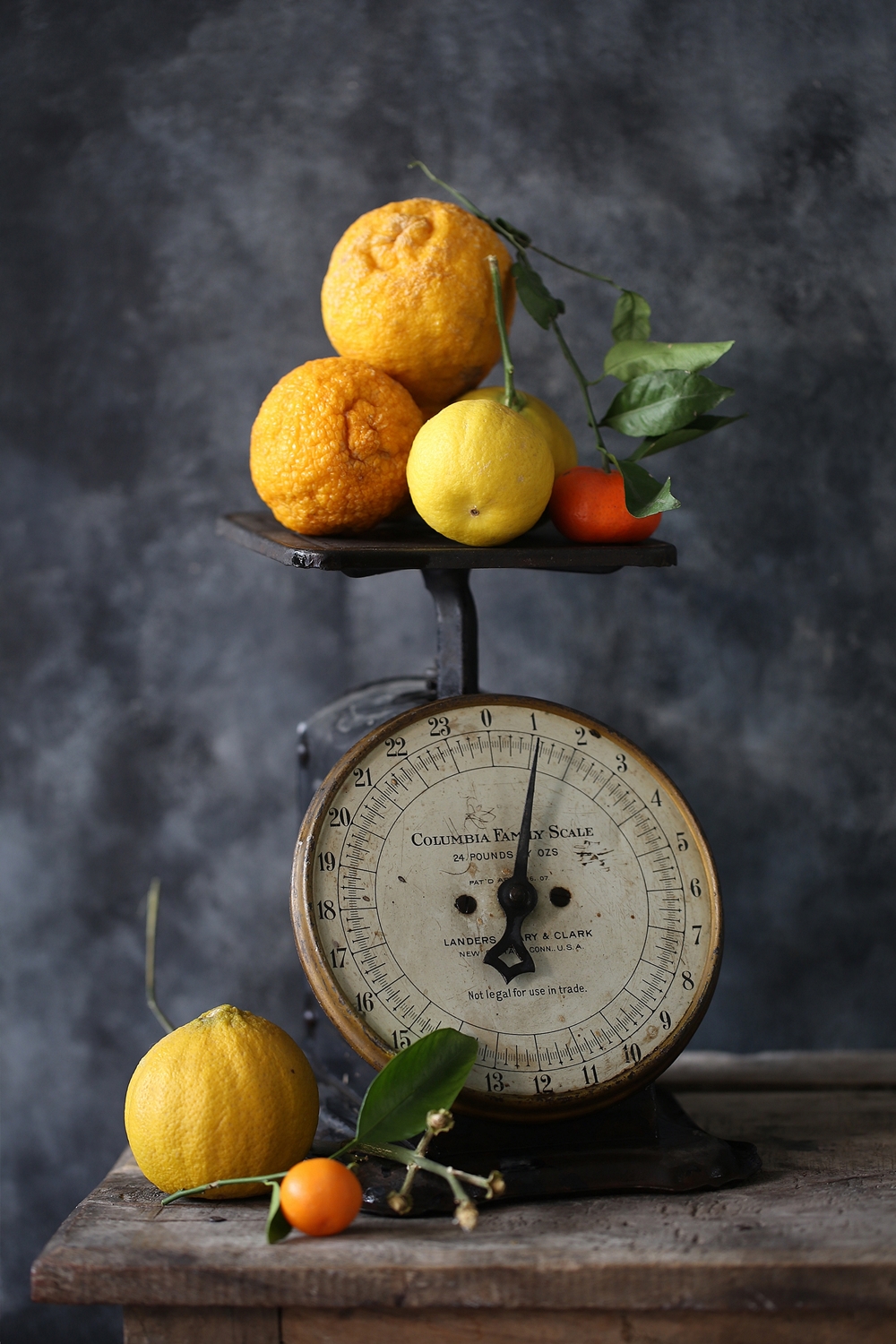 So all you need for this glorious colour in this Bitter Calamondin Marmalade is fruit, sugar and water. Loads of patience to snip the peels and some time for stirring the pot! It’s always to do this when you have free time, no distractions etc. It can take a few seconds of neglect to get the jam catch the bottom. Once the marmalade is almost done, do a plate test to see if the pectin has done its job. Else cook a little longer, check again.
So all you need for this glorious colour in this Bitter Calamondin Marmalade is fruit, sugar and water. Loads of patience to snip the peels and some time for stirring the pot! It’s always to do this when you have free time, no distractions etc. It can take a few seconds of neglect to get the jam catch the bottom. Once the marmalade is almost done, do a plate test to see if the pectin has done its job. Else cook a little longer, check again. 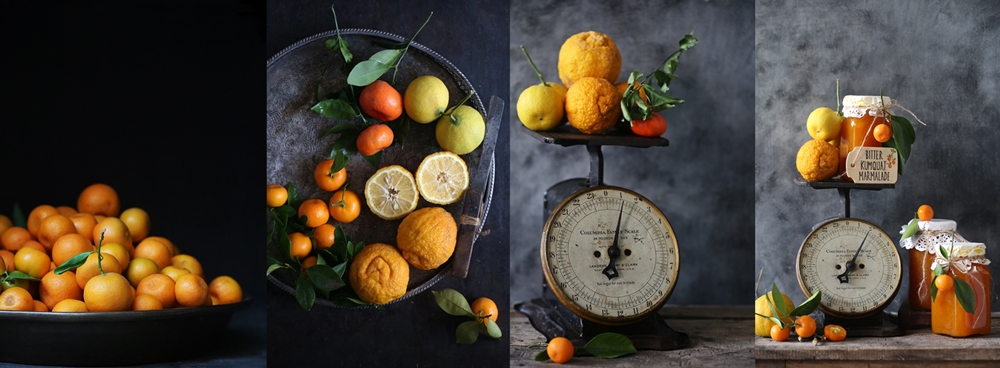 I added the juice of 2 limes too but it’s not necessary. You can add ginger if you like, maybe a red chili for slight heat! This recipe of Bitter Calamondin Marmalade is for all those folk who asked for it on Instagram when I shared an image in stories. A kilo of fruit yields 4-5 jars, enough to dig into, enough to share around!
I added the juice of 2 limes too but it’s not necessary. You can add ginger if you like, maybe a red chili for slight heat! This recipe of Bitter Calamondin Marmalade is for all those folk who asked for it on Instagram when I shared an image in stories. A kilo of fruit yields 4-5 jars, enough to dig into, enough to share around!
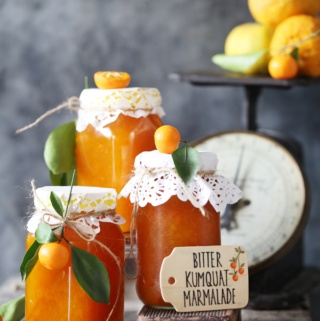
Bitter kumquat marmalade
Ingredients
- 1 kg kumquat {chinese oranges, narangis}
- 1 kg granulated sugar
- 250 ml Water
Instructions
- Sterilize 5 X 250g jam jars. Place a metal spoon in each jar {this ensures that the glass jar will not crack when the hot jam is poured in}.
Stove Top method
- Halve the kumquat. Place the sieving bowl over a bigger bowl, and squeeze the seeds to deseed the fruit. We need to collect the seeds as they contain the pectin to set the jam. Make a bouquet garnet of the seeds.
- Snip the peels with scissors into strips. {I got lazy and gave them a quick spin in the Thermomix}.
- Place the cut peels, with the pouch of seeds and any collected kumquat juice, in a heavy bottom pan on full heat. Boil for a few minutes till the peel is tender, stirring constantly.
- Add the water and continue to cook on high for 2-3 minutes. Now add sugar, stirring constantly.
- Continue to cook over high heat for a further 20-25 minutes until the mixture thickens & the strips becomes translucent. Stir often else it'll catch the bottom. Don't leave unattended.
- Do a plate test by dropping some marmalade on a cold metal plate to check if the jam is setting properly. After 30 seconds, it should congeal and look jellylike.
- Put off the flame, discard the muslin pouch with the seeds and allow the jam to cool for 10-15 minutes. Stir to distribute the strips.
- Now pour the marmalade into the jars, and seal after 10-15 minutes. {I refrigerate my jars}
Thermomix method
- Place the peels in the TM bowl and slice at speed 10 for 2-3 seconds. Add the reserved juice to the TM bowl, with 250g water, and run on Reverse at 100 for 10 minutes, speed slow.
- Add 800g sugar and the bouquet garni {which holds the seeds}, and run at reverse at speed 2 for 2 minutes. Add a further 450g sugar {small calamondins tend to be very bitter}, and continue to cook at reverse speed 2 for a further 8 minutes.
- Now turn power to 100C, place the lid at an angle, and cook until the gelling action kicks in and the jam begins to set. {Do a stainless steel plate test. Drop some marmalade on a cold plate to see if it sets in under a minute}. Mine took about 7-8 minutes.
- Put off the TM, discard the muslin pouch with the seeds and allow to stand in TM jar for about 15-20 minutes, and then pour into prepared jars. I refrigerate my marmalade.
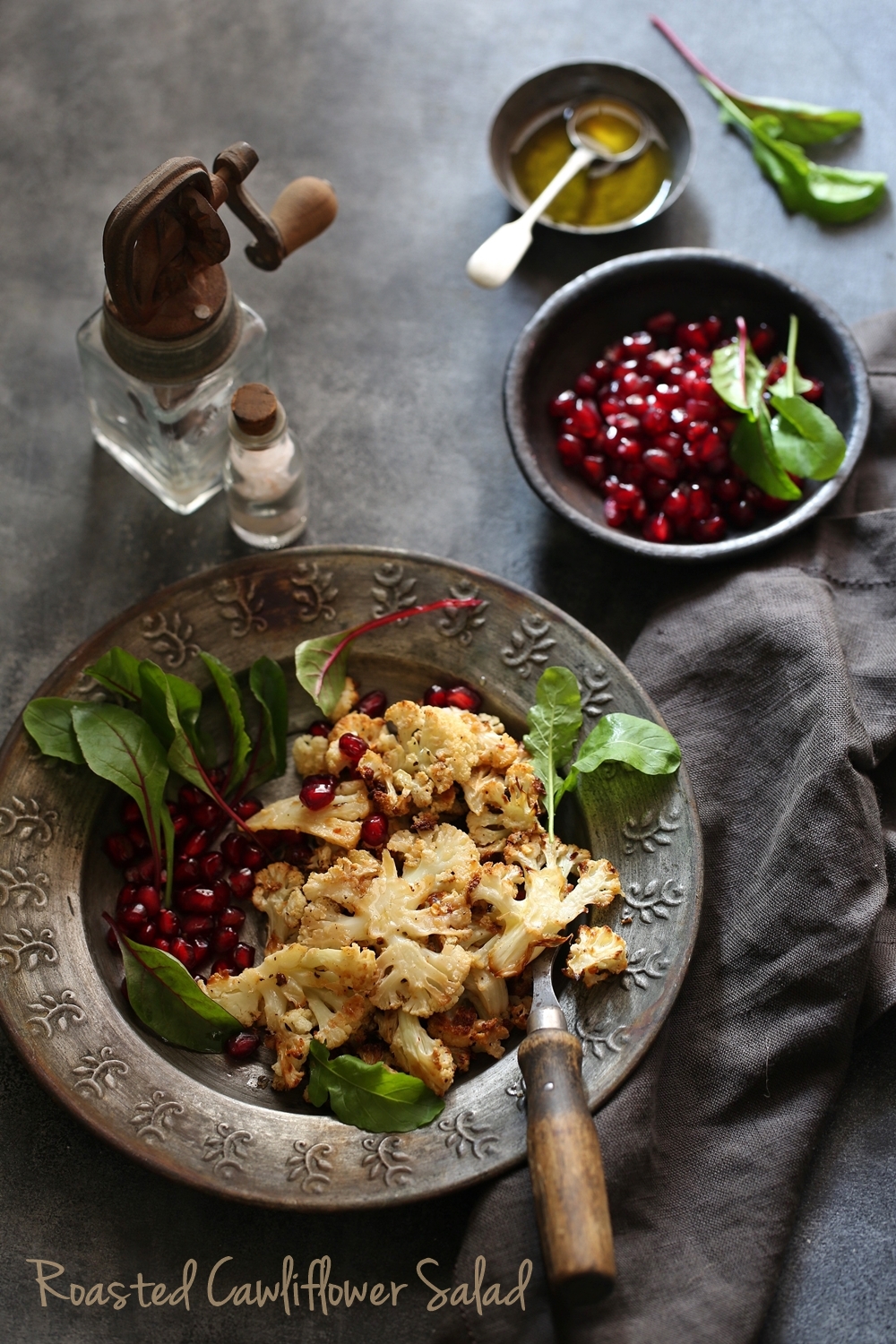

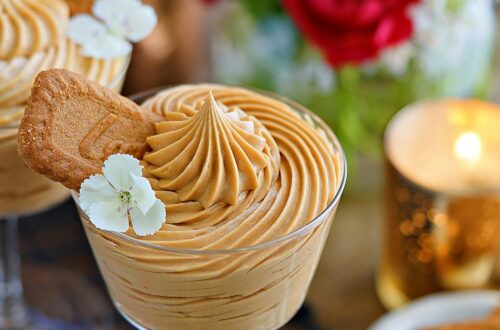


13 Comments
2pots2cook
So glad to find another kumquat admirer ! thank you so much !
Deeba @ PAB
Yayyy. That’s brilliant. I’d love to know what more you make with these.
Gis Council
It sound delicious and very tasty we love it.
ealpha store
Thank you for this tasty information. keep us update
Amit Shroff
So nice.. lovely recipe and product.
Digital Marketing Agency Delhi
Hey keep posting such sensible and significant articles.
Kesariyaa
Hi Deeba,
I have been following your blog over 5 years now and see your obsession with this fruit! I love all your recipes and especially drool over the kumquat ones. Do you know what would these be called in Gujarati or Marathi? I am a huge fan of making jams at home and am dying to get my hands on these. I searched the net for what it might be called in Gujarati to no avail.
Thanks,
Prajakta
Deeba @ PAB
Hi Prajakta, Thanks so much for your sweet words and for taking the time to stop by over the years. I have no idea what they are called in Gujarati or Marathi. Locally they are called Chinese oranges or narangi. These are not available in the market as have no commercial value. Maybe take a picture to a local nursery and ask?
Geetanjali Katyal
For how long this marmalade can be stored in fridge
Deeba @ PAB
If you can sterilise and vacuum seal the jars then for for a few months, else I would suggest 3-4 weeks at best.
Rehana Fazli
Your photo is stunning, your recipes sounds great, but, as one marmalade lover/maker to another, these are not kumquats. What you have are calamondins. Kumquats are not round, they are slightly elongated. If you pop a kumquat, straight from the tree (I grow both) into your mouth, the flavors, sweet, sour and bitter, which burst onto your palate with the first bite, are from heaven! The calamondin, too, is good raw but it’s more sour. As marmalades, they are equal to each other.
Deeba @ PAB
I think you might be right. I’ll change the name right away.
Pingback: